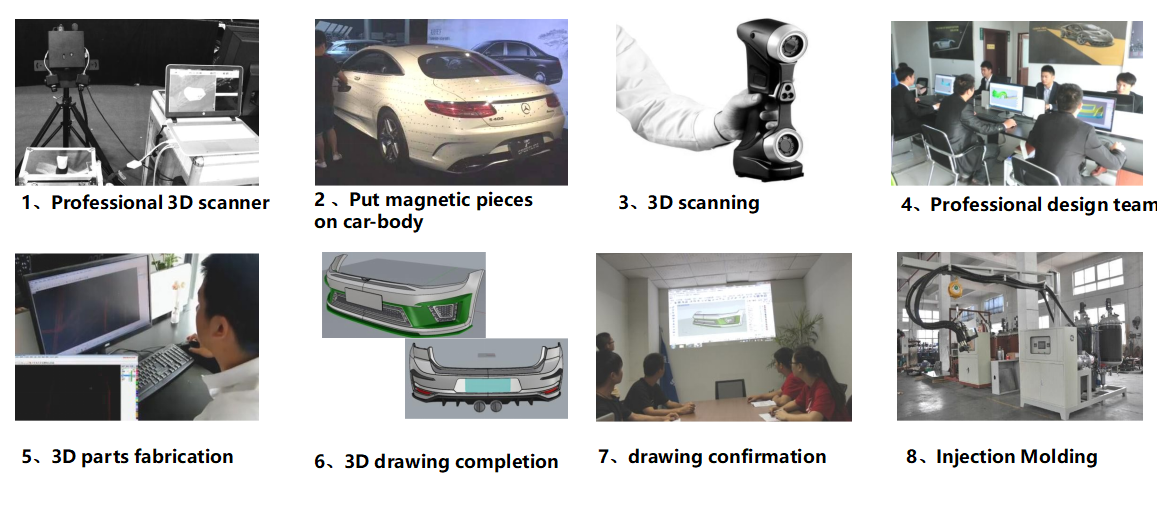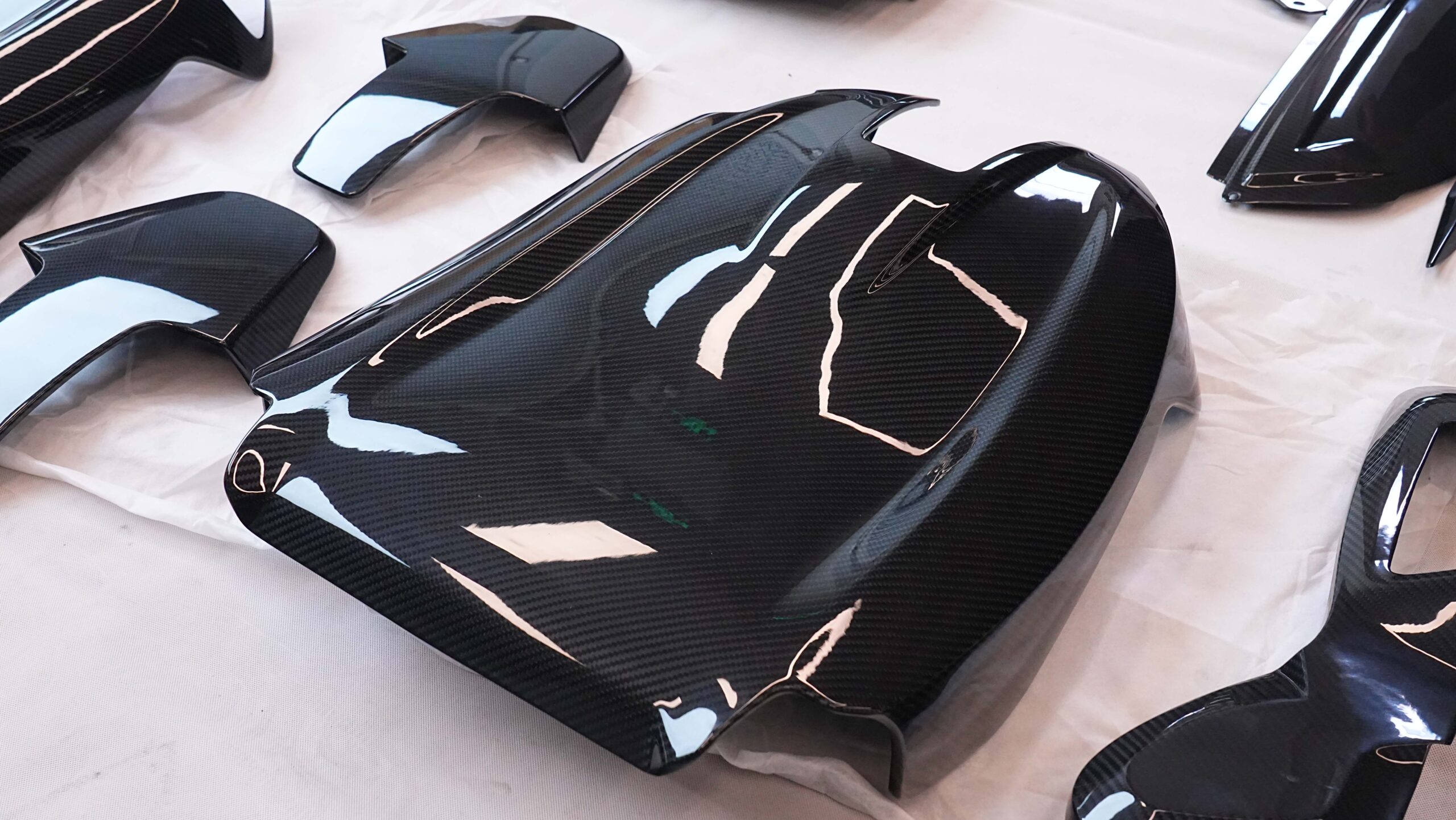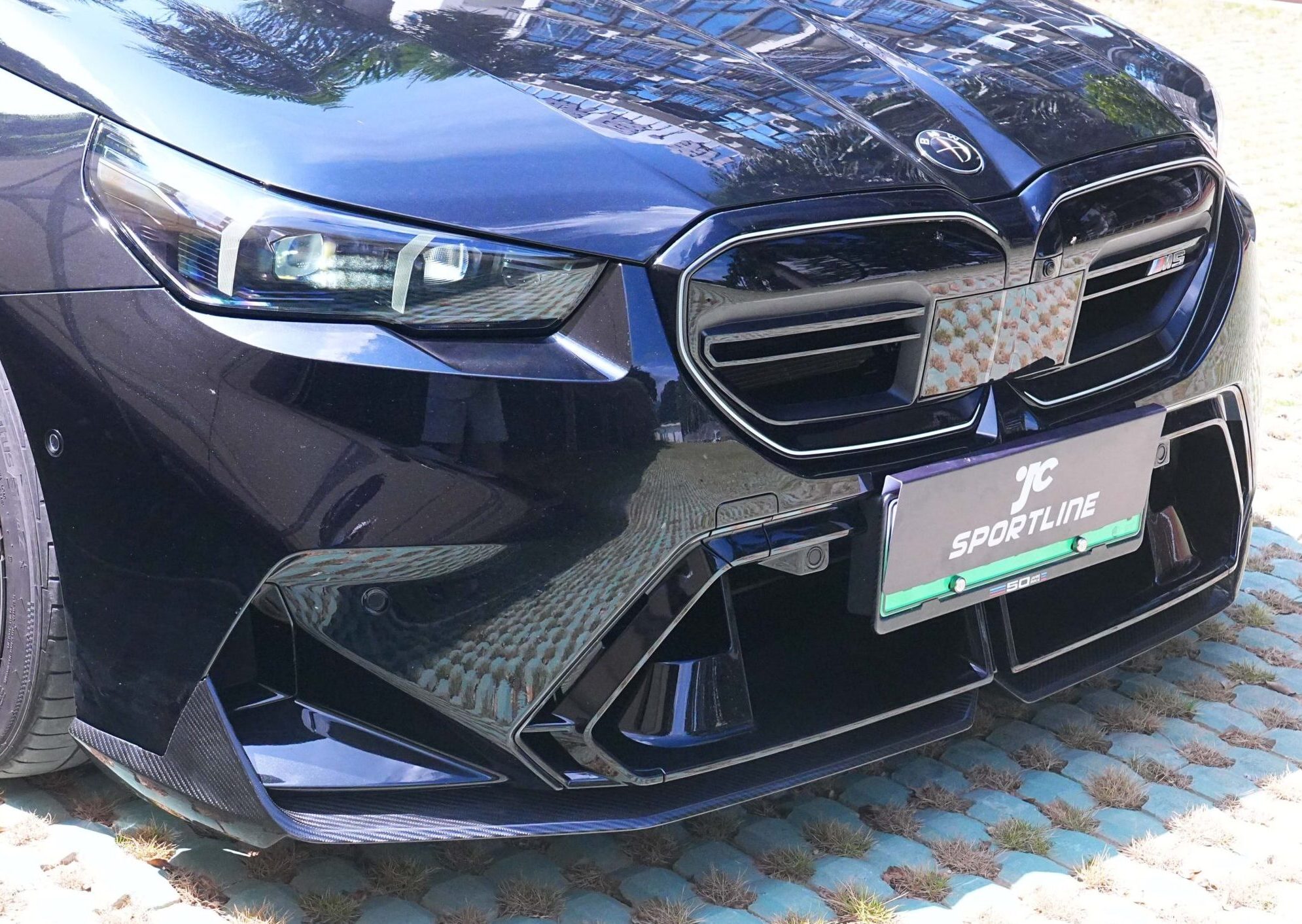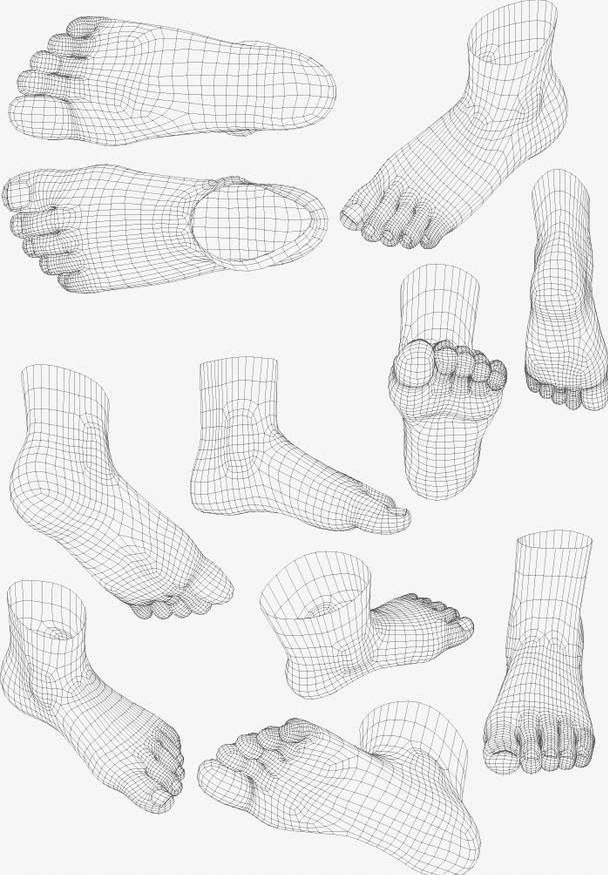Table of Contents

Carbon fiber wrapped parts are extremely popular in the automotive and high-performance world. They look amazing, are lightweight, and make your car feel faster. But if you’re new to carbon fiber and carbon fiber products, you might be confused about the different types, their unique properties, and how they compare to other materials like aluminum, steel, or plastics. Which one is best for your car? How are these parts actually made using advanced carbon fiber production processes? Don’t worry—we’ve got you covered.
In this guide, we’ll break down carbon fiber sheets, explain the carbon fiber production process, and help you choose the right custom carbon fiber parts for your car or project.
Why Carbon Fiber Wrapped Parts and High-Performance Carbon Fiber Products Are Awesome
Before diving into technical details, let’s see why car enthusiasts and industrial applications love carbon fiber:
- Lightweight & High Performance: Carbon fiber materials are extremely light compared to steel or aluminum, improving weight and performance while maintaining dimensional stability under temperature changes.
- Strong & Rigid: Carbon fiber reinforced composite material offers excellent mechanical properties for durability and stiffness.
- Stylish & Modern: Carbon fiber products give your car a sleek, high-tech look, making them popular in automotive, aerospace, and sports equipment like golf club shafts.
You’ll find carbon fiber wrapped parts on roof panels, hoods, mirrors, interior trims, and more. The combination of carbon fiber sheets, composite material, and coated surfaces ensures durability, rigidity, and long-term stability.
Understanding Different Types of Carbon Fiber Sheets and Custom Carbon Fiber Parts
There are many types of carbon fiber sheets and carbon fiber parts. Here’s a simplified guide:
- Plain Weave Carbon Fiber Sheets: Balanced strength, works for most wrapped parts.
- Twill Weave Carbon Fiber Sheets: Diagonal pattern, easier to shape, adds style.
- 3K, 6K, 12K Fibers: Refers to the number of filaments per bundle; higher K = thicker, stronger fibers.
- Prepreg Carbon Fiber Materials: Comes pre-soaked with resin; perfect for high-performance custom carbon fiber parts.
- Dry Carbon Fiber Sheets: Needs manual resin application before curing; cost-effective for smaller production.
Knowing the type helps you pick the right carbon fiber parts and optimize both performance and aesthetics.
How Carbon Fiber Production Works: Step-by-Step for Carbon Fiber Parts

Making carbon fiber parts is part science, part art. The carbon fiber production process ensures each component is lightweight, strong, and extremely rigid.
- Design & Mold for Carbon Fiber Wrapped Parts: CAD or 3D scans produce molds for precision and high-performance parts.
- Cutting Carbon Fiber Sheets & Fibers: Carefully follow weave direction to maintain strength and stiffness.
- Layering & Wrapping Composite Material: Carbon fiber reinforced composite material is applied in layers to create rigidity.
- Resin Application: Dry carbon fiber sheets need resin; prepreg sheets are ready to cure.
- Curing / Baking High-Performance Carbon Fiber Parts: Vacuum bagging or ovens produce uniform heat and high-strength carbon fiber parts.
- Demolding & Sanding Carbon Fiber Products: Smooth the surface while preserving mechanical properties.
- Coating Custom Carbon Fiber Parts: Clear coats protect the surface, improve appearance, and reduce wear.
This process allows manufacturers to produce high-performance carbon fiber products that outperform aluminum, steel, and many plastics in automotive, aerospace, and other applications, even at mass production scale.
Choosing the Right Carbon Fiber for Your Custom Carbon Fiber Parts
Not all carbon fiber products are the same. Here’s a simple guide:
- Look & Style First: Twill weave + clear coat gives a high-tech and visually appealing finish.
- Performance First: Prepreg carbon fiber with high-temp curing maximizes tensile strength, rigidity, and mechanical properties.
- Budget-Friendly: Dry carbon fiber sheets + manual resin offers lightweight solutions at lower costs.
- Mass Production / Big Components: Consider efficiency, raw material cost, and carbon fiber production advantages.
Understanding carbon fiber materials, manufacturing processes, and composite material forms helps both hobbyists and businesses optimize performance, customization options, and cost.
Who Buys Carbon Fiber Wrapped Parts, Custom Carbon Fiber Products, and Carbon Fiber Composites Material?

- C-end Consumers: Car enthusiasts looking for lightweight, stylish, and high-performance carbon fiber parts.
- B-end Businesses: Automotive shops, garages, or aerospace manufacturers needing volume mass production and stable performance.
Tips: Check the fiber type, carbon fiber production process, and supplier experience before purchasing carbon fiber sheets, custom carbon fiber parts, or carbon fiber products.
Carbon fiber wrapped parts are amazing, but understanding carbon fiber materials, carbon fiber reinforced composites, and carbon fiber production processes helps you pick the right solution. Always work with experienced manufacturers like JCSPORTLINE. With 20 years of experience, we provide high-performance custom carbon fiber parts that are lightweight, extremely rigid, and fully optimized for automotive or industrial applications.
Contact us today to see how your carbon fiber products can be designed, produced, and shipped safely!






